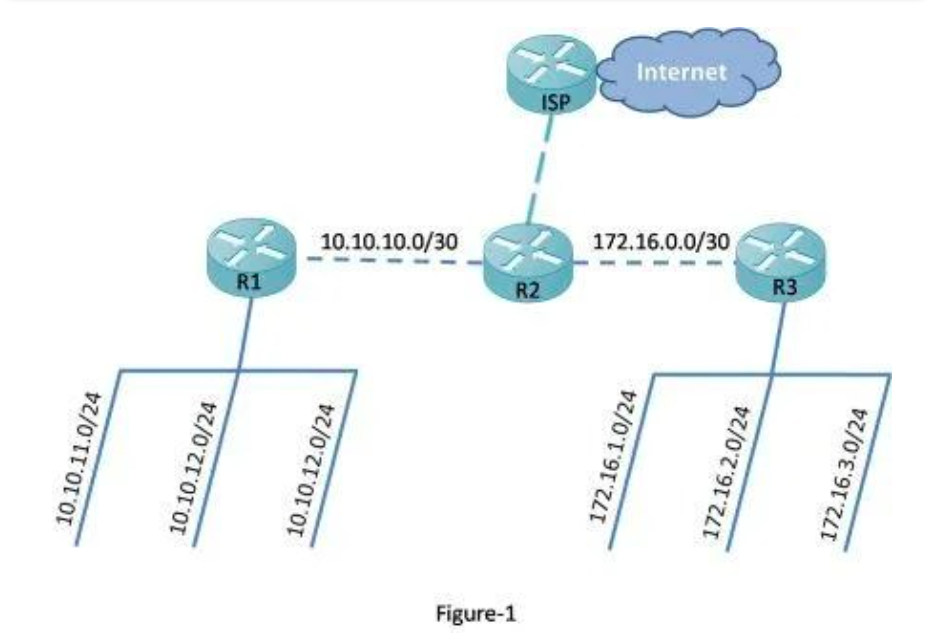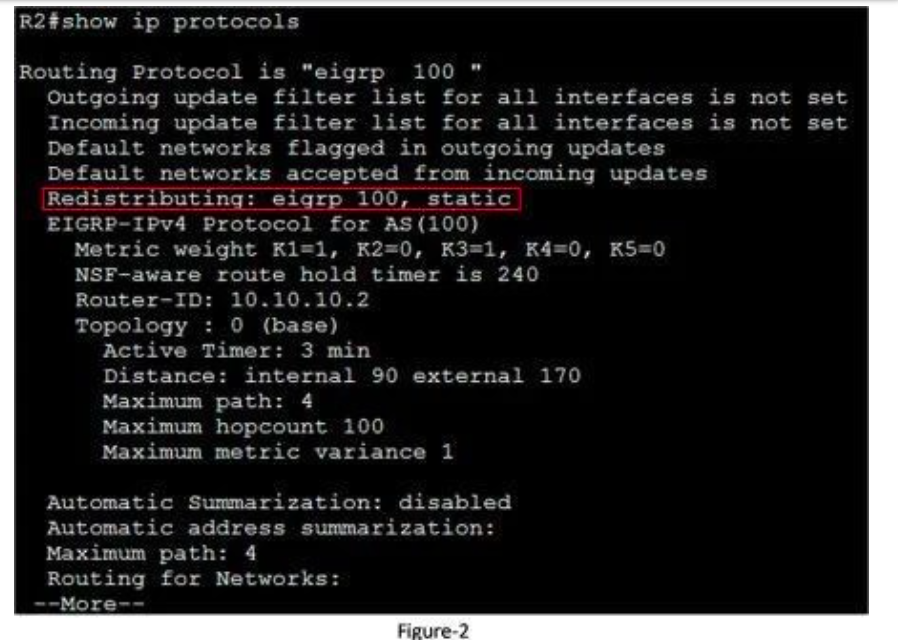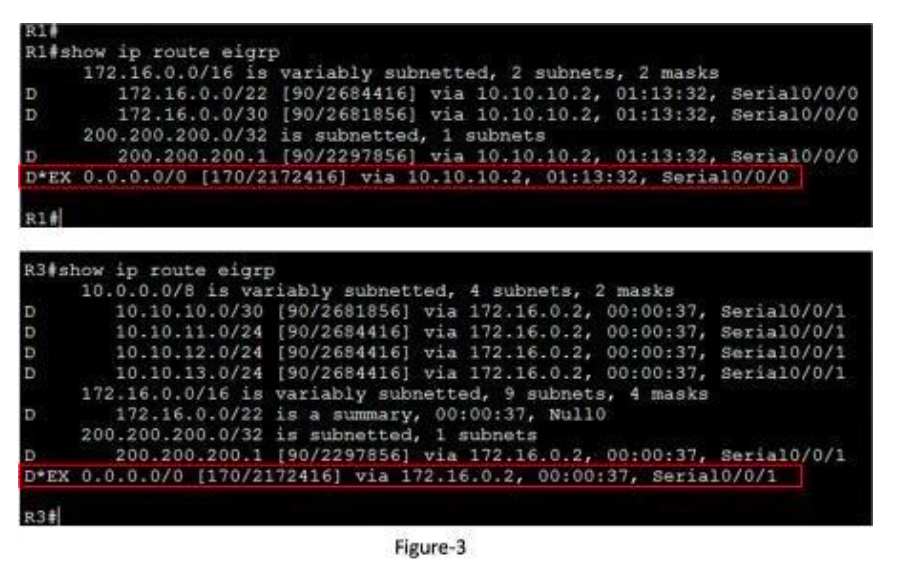The IP address 0.0.0.0/0 is reserved for the default static route. The default route is not routing protocol-dependent; we can use it with any currently supported routing protocol. Usually, the static default route is configured on the edge router, where a network is connected outside the EIGRP routing domain and propagates the default static route to other routers.

Figure 1 illustrates the topology configured with EIGRP, where R2 is the internet gateway for the EIGRP routing domain. The static default route is configured on R2, pointing to the ISP router. When the static default route is configured, it is necessary to propagate the default static route throughout the EIGRP domain to other EIGRP routers, in this example, R1 and R3.
So, we can propagate the default static route within the EIGRP routing domain using the “redistribute static” command in router configuration mode. This command adds static routes previously configured in EIGRP routing updates to other routers. The redistribution configuration on R2 is the following:
- R2(config)#router eigrp 100
- R2(config-router)# redistribute static
- R2(config-router)#
Verifying the Propagated Default Route
Now, we can verify the configuration on R2 as well as on R1 and R3. We can use the “show ip protocols?” command to verify that R2 redistributes static routes within the EIGRP routing domain. Figure 2 illustrates the output of this command.

We can verify the static default route on R1 and R3, where we have not configured any default route. Figure 3 illustrates the routing table of R1 and R3. In the routing tables for R1 and R3, you can see the routing source and administrative distance for the default route learned using EIGRP. We can identify the EIGRP learned default route by the following parameters:
- D– This means the route was learned from an EIGRP routing update.
- *– The route is a candidate for a default route.
- EX– The route is an external EIGRP route.
- 170– This is the administrative distance of an external EIGRP route.

EIGRP for IPv6: Default Route
We can configure the IPv6 default router and propagate that default router separately from the IPv4 default route. Similarly to EIGRP for IPv4, a default static route is configured on the gateway router. In this example, R2 is the gateway router, as shown in Figure 1. To configure a default static route on R2:
R2(config)# ipv6 route ::/0 GigaEthernet 0/0
The::/0 is the default prefix and prefix length, equivalent to the 0.0.0.0 0.0.0.0 IP address and subnet mask used in IPv4. Both are all-zero addresses with a /0 prefix length. We can redistribute the IPv6 static default route into the EIGRP for IPv6 domain using the same “redistribute static” command.
Verifying Propagation of IPv6 Default Route
We can verify the IPv6 default route propagation by examining the IPv6 routing table of R1 and R2 using the “show ipv6 route” command.




